#celestial objects
Text
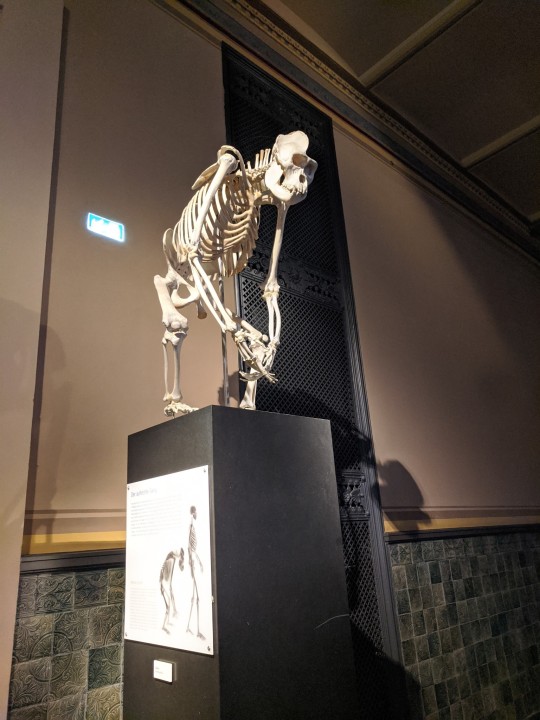
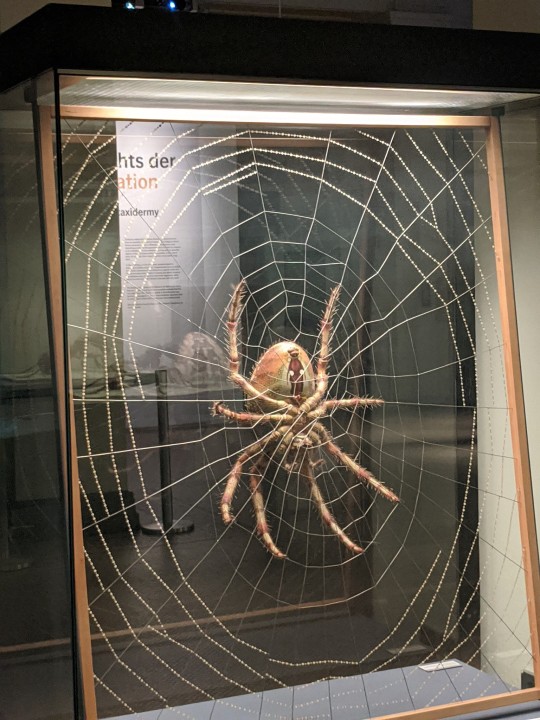





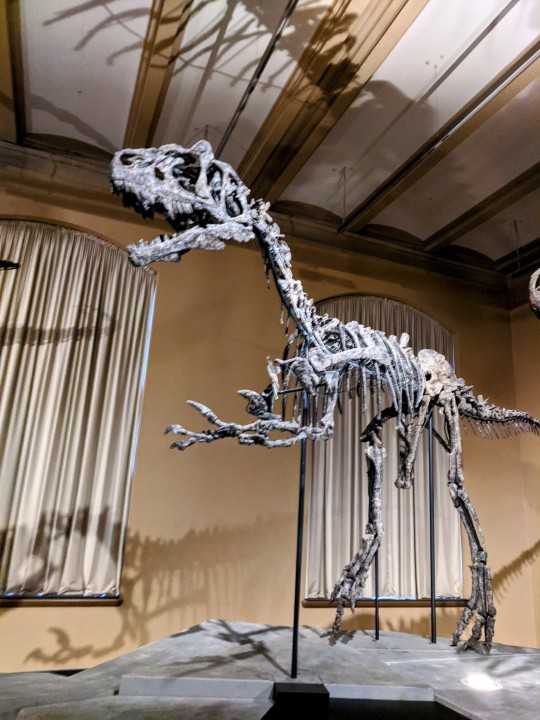
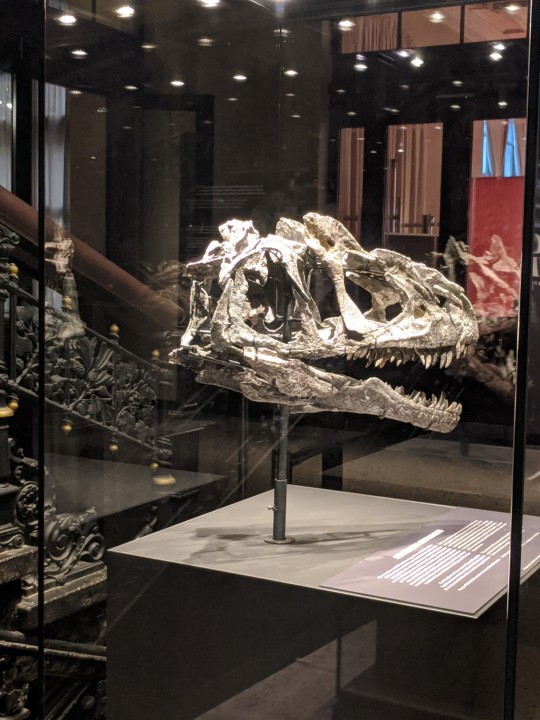

I recently went to the Museum für Naturkunde which roughly translates to Museum of Natural History in Berlin.
This was my first ever experience of seeing actual dinosaurs(or whatever remains of them)
I also got to see their least favourite reindeers, which are comets basically.
I realized I will never be tired of visiting museums (even though the moralities are always in question when it comes to museums and zoos)
Nonetheless it was a cherished experience.
#museums#berlin#dinosaur#naturkundemuseum#comets#dinosaur jokes#celestial dust#celestial objects#largest dinosaur#science#biology#anthropology#paleontology#funny
547 notes
·
View notes
Text

Amuseable Moon
Ko-fi / Instagram
#stuffed animals#stuffies#jellycat#jellycats#jellycatstuffies#jellycatlondon#jellycatplush#moon#celestial objects#amuseables#cute#plush#plushies#plushblr#plushie#plushcore#plushiecore#stuffiecore#allplush#safeplush#plush toy#plush toys#soft toy#soft toys#toycore#catalog#photography
573 notes
·
View notes
Photo

''Wonders Around the Sun'' by Mary Graham Bonner, 1957
Source
#Wonders Around the Sun#mary graham bonner#juvenile literature#astronomy#natural sciences#celestial objects#that pale blue dot
165 notes
·
View notes
Photo

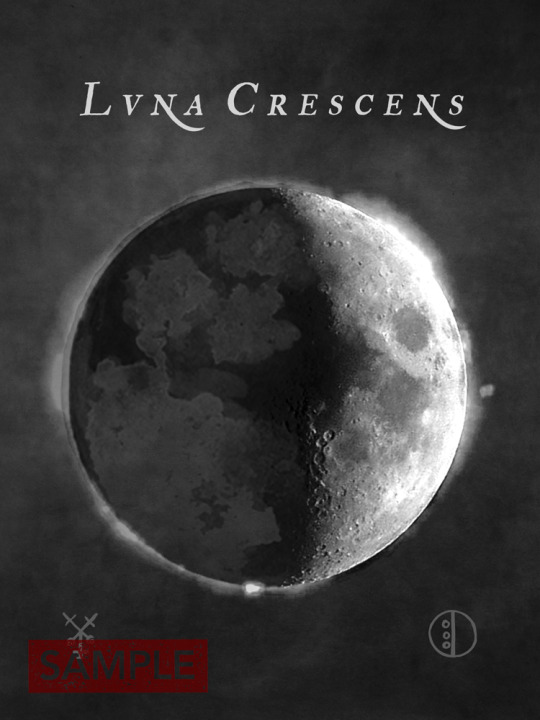




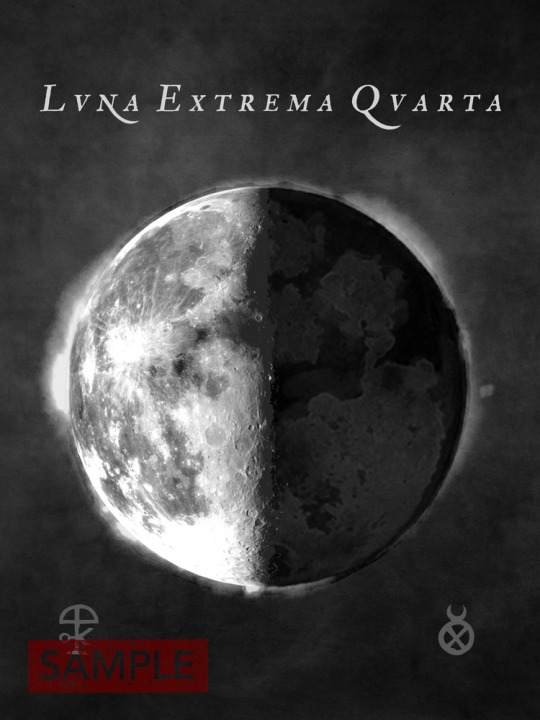
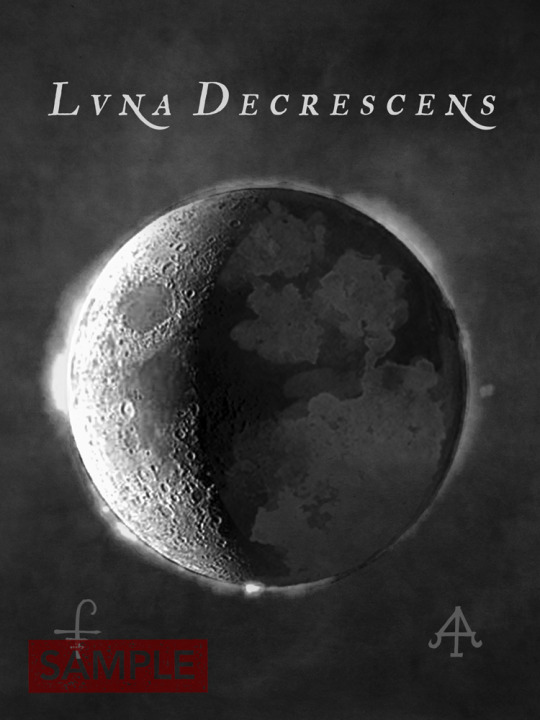
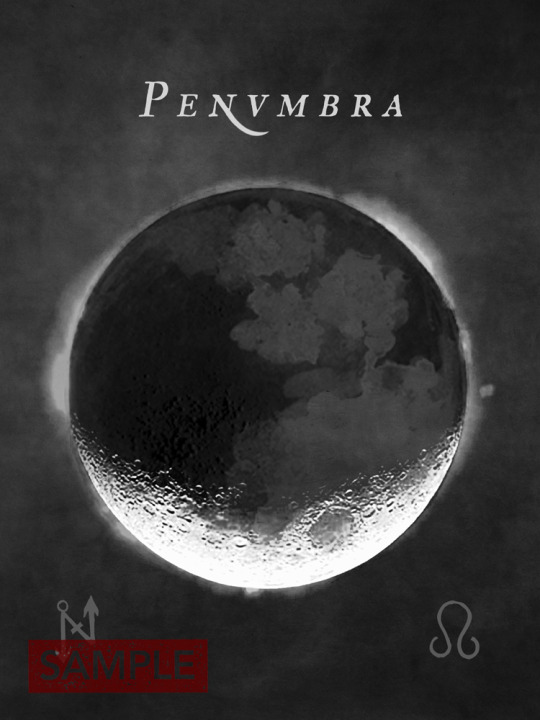
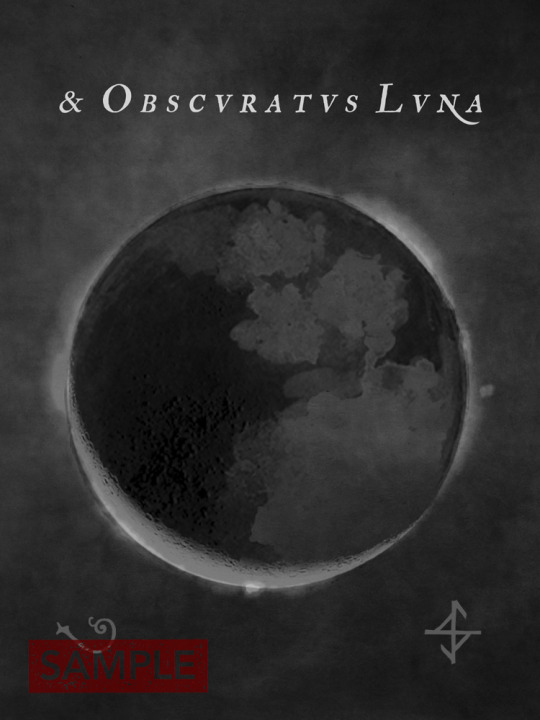
Lunar phases & phenomena, Maria Clara Eimmart style with a touch of alchemy.
#alchemy#alchemy symbols#astronomy#celestial objects#chemical elements#chemistry#constellations#lunar eclipse#lunar phases#lunar phenomena#maria clara eimmart style#mixed media#moon#obliqua#outer space#penumbra#planets#space#space art
7 notes
·
View notes
Text
Cookie run kingdom but what celestial objects I associate with them

#cookie run kingdom#cookie run tier list#celestial objects#sun moon amd stars#cookie rum kingdom characters#tier list#random post
5 notes
·
View notes
Text
MIT community members gather on campus to witness 93 percent totality
New Post has been published on https://thedigitalinsider.com/mit-community-members-gather-on-campus-to-witness-93-percent-totality/
MIT community members gather on campus to witness 93 percent totality


The stars and other celestial objects truly aligned on MIT’s campus Monday. After a weekend of rain, the community was treated to clear skies and high temperatures to view the only partial eclipse for the next 20 years.
Community members took in the interstellar anomaly in gatherings large and small. Although many traveled north to view the full eclipse, those in Greater Boston were treated with 93 percent coverage and ample ways to appreciate the cosmic wonder.
As the moon met the sun beginning around 2:15 p.m., Kresge Oval hosted crowds of onlookers, with staff members handing out solar filters of various types and encouraging star-struck viewers to sketch what they saw and tell stories. The event was hosted by the MT Edgerton Center and inspired by the seminar EC.050/090 (Recreate Experiments from History: Inform the Future with the Past).
On the other side of campus, the MIT Museum also hosted a gathering that included a full afternoon of programming. Attendees could hear from an astronomer and ask questions while they took in the views with solar filter glasses.
In Building 55, home to the Department of Earth, Atmospheric, and Planetary Sciences (EAPS), where the lives of stars take up a bit more headspace each day, sights and sounds from NASA’s livestream appeared on the department’s large new media wall.
Each of the gatherings could have been a scene out of a science fiction movie as everyone donned their glasses and looked up in amazement at the darkening sky. Those with extra eyewear to share quickly found themselves with new friends to experience the moment with.
“The Edgerton Center is really about building communities, and this was an opportunity to get the MIT community together to observe this thing that rarely happens and have some conversations about what’s really going on,” said Jim Bales, the associate director of the Edgerton Center.
Such events have evoked fear and confusion in Earthlings throughout history, but this time, MIT’s community members seemed more prone to appreciative reflection. Many students, faculty, and staff took a break from terrestrial life to take in the rare natural phenomena, a welcome planetary disruption to an otherwise typical Monday on Earth.
“Watch parties are cool because you’re learning from what other people have to say about it and you get to meet new people,” said sophomore Sol Roberts. “You can only stare up for so long, but being with other people it makes it more enjoyable.”
Of course, MIT didn’t abandon its scientific bent entirely. The community, after all, was never going to stop helping humanity understand the fundamental workings of the universe. Myriad community members participated in professional and citizen science initiatives of one sort of another. Meanwhile, MIT’s Haystack Observatory in Westford, Massachusetts measured changes in the atmosphere, and members of the Department of Physics took measurements of the sun’s intensity using the shiny new radio telescope on the roof of Building 54.
As surreal as the skies appeared, the Earth’s surface offered equally fun sights. The gatherings made the eclipse at once an intergalactic event and a hyper-local one, an impossibly distant astronomical anomaly shared between friends.
#2024#atmosphere#Building#Cambridge#Boston and region#celestial objects#citizen science#Community#course#disruption#EAPS#earth#Edgerton#Events#eyewear#Faculty#fear#filter#Filters#Full#Fundamental#Future#Haystack Observatory#History#interstellar#it#learning#life#measurements#media
0 notes
Link
The last time Comet C/2022 E3 (ZTF) was visible in the night sky, Neanderthals were still roaming the planet with our ancestors. In the intervening 50,000 years, a lot has changed, and we can see these celestial objects with binoculars and telescopes – but you won’t need them to see this comet. C/2022 E3 (ZTF) is now visible to the naked eye
0 notes
Text
Celestial Bodies AU (maybe part 1/?)
Superman flew through space, eying the new galaxy that he and Batman had discovered the night before.
“So? What does it look like?” Batman asked him through the communications.
“Well…” Superman looked around. “It’s definitely weird. It has an enormous cluster of stars, but I’m not feeling stronger…”
“What? Are you saying that the radiation isn't working?"
"The stars here are all white stars or above, but they don't make me feel stronger. Actually... I think I'm feeling weaker too. Something is definitely wrong here."
Batman was quiet for only a moment before he asked, "Are you in any current danger? Can you defend yourself?"
"No, I'm fine. I don't sense any living beings around me. I can defend myself." Superman understood what Batman was trying to say. "Are you asking me to stay and continue observing?"
"If you can."
"Of course. I'll stay and continue investigating."
"Thank you," Batman said softly and Superman smiled at that.
"Don't sweat it! Let me get the receiver."
Superman pulled out the device that allowed him to connect to radio signals from space, and began turning it on. However, the moment it turned to life, the radio began to malfunction, short circuiting and turning into static as it shook itself. Superman nearly tossed it away before suddenly, it was normal again.
And then, the signal began to pick up.
And it began to sing.
Superman stared wide eyed as a symphony of music and singing came through the radio. It was a little choir of humming and barely audible voices, sounding as though they were underwater. Still, it was undeniably beautiful, like something heard from heaven.
"Batman," Superman said, hushed, "are you hearing this?"
"... yes."
"It's amazing! Are these stars making these sounds?" Superman continued flying, observing the blue and yellow stars, each radiating a heat that could not power him. He continued flying, listening to the ethereal song that called for listeners.
He hadn't been paying attention when he felt an ever sensed blistering heat and a force beginning to drag him forward. He turned his head and his eyes widened again before he cursed and flew a little distance away.
"Superman? What is it?"
"Batman, turn on your visuals," he said as he turned on the camera.
There was silence before Superman heard the barely audible click and then a buzz of a camera. The camera was attached to Superman and it would send the views back to Batman, allowing him to see just what Superman was freaking out over. When it turned on, Batman was silent for a moment, clearly as confused as Superman was feeling.
"... tell me what I'm seeing."
"A quasar, a protostar that is possibly becoming a blue star, a neutron star, and a black hole all coexisting right next to each other. As well as several planets all circling them like stars."
Superman watched the scene with a sense of both interest, awe, and horrified confusion.
The scene in front of him just wasn't possible. Not only would a black hole consume everything around it, there was already a quasar nearby doing the same thing with an even stronger force. However, the protostar and neutron star were fine even though they were so close, along with the few planets. The planetary nebula around the neutron star circled around each celestial object in an assembly line, flowing from the neutron star to the black hole to the quasar and then to the protostar. If the nebula wasn't taken by one celestial object, it was passed onto another.
Most of the nebula seemed to be absorbed by the quasar and protostar, but the two of them seemed to coexist in peace. The neutron star continued to spin and the black hole surrendered most of the nebula to its neighbors. The planets also spun peacefully, a few even had rings that were not taken by the quasar or black hole.
It was like only foreign objects, like Superman himself, would be absorbed.
It was fascinating. Like they were alive and knew how to live with one another.
Superman explained it to Batman in detail. Batman was silent before he said, "This shouldn't be possible. How could this occur? Unless there was some sort of external force that is keeping each astronomical object to themselves and prevents them from destroying each other, there's no way this could be a natural occurrence."
"Are you suggesting that this is man-made?"
"How could it be anything but? Aren't you listening to singing right now?"
Superman raised the receiver and the singing on the other side continued without pause, a constant symphony of voices.
"... you could be right. Do you want to try and make contact?"
"Yes. Send back a signal."
Superman pressed a few buttons on the receiver to send a radio message back and in an instant, the singing died down, leaving only a faint crackling and a water-like noise.
Biting the bullet, Superman then spoke into the receiver.
"Hello. My name is Superman, and I come from the Milky Way galaxy. I am a kryptonian from the planet Earth. I wish to peacefully connect with you, whoever you are."
More crackling.
Batman cursed softly in his ear and Superman winced, already feeling that he was too impulsive. However, just as he was about to backtrack and escape from this particular galaxy, there was a whispered, shuddery, "Hello."
Superman blinked and then called out, "H-Hello!"
There was silence again, only that underwater staticky noise coming through.
"Can I take this as you accepting my peace offering?"
"... yes."
The sound that came from the receiver seemed to come from many, all joining together into one.
There was a hitched gasp and then Batman hissed, "Keep talking! Ask them questions! Ask them if they want to make contact with us or if we can form an alliance!"
Superman nodded to himself and spoke into the receiver, "Can you see me?"
"We see you."
Superman paused and then continued in stride, "I'm sorry, but I can't see you. Can you show yourself?"
"In front of you."
There was nothing but the strange collection of celestial objects. Unless there was someone inside? It could be possible, but Superman hadn't detected anyone living around him for awhile now.
"Uh, I'm sorry, but—"
"In front of you."
Batman then said through the communicator, "Superman, the neutron star!"
The neutron star in front of him then began to spin faster and faster, before lighting up into a pulsar in the very next second.
Superman was stunned at the sight, as the radiation emitting from the neutron star passed over him over and over and over, radiating with a cold burn that resonated through his bones and made his limbs weak. The impossibly quick change from a regular neutron star into a pulsar only made him even more frightened as the radio signals made the receiver scream.
"We are here." The crackling voices said again, all as one.
Superman flew backwards, his breath caught in his throat.
"Superman?! Why did you go backwards?" Batman demanded.
Superman flinched and then he said softly, "Sorry. Instinct."
It was true. The fear that had entered his body had made him instinctively retreat. It was even worse than looking death in the eye. It was like the feeling of knowing the End of All, of knowing that your existence would be wiped out, of knowing that resistance would be futile and that your death wouldn't even be enough to save the ones you loved.
His heart pounded as he flew a little closer, enough to feel the heat from the quasar again and almost reluctantly said into the receiver, "Are you the neutron star?"
"We are all what you see in front of you."
"'We'? Are all of you speaking to me?"
The neutron star pulsed again, spinning just a little faster like before.
"I am the King. And these are my family."
The voice than switched out, a barely noticeable change in the difference because it was all the same voices speaking as one. However, now a different voice was leading.
"Ask your questions, Son of Jor-El. What do you seek?"
Superman's eyes widened. Then after a moment of silence, he said, "I am here to explore the universe and find protection for the planet I live on. Could you help us?"
"We are but objects in the sky. We will only answer questions."
Batman interrupted. "Ask them if they can see the future and if anything will happen to Earth."
Superman explained to the collection of celestial bodies, "This is my colleague and partner, Batman. We work together for Earth's safety."
"We know. He is the best of you."
There was silence from both Superman and Batman. Superman was stunned, but he also couldn't help but smile. "Yes, that is true. Can you see the future? Can you tell us if any dangers will be coming to earth."
Another voice came to life, taking the lead in speaking. "We can. Whatever comes, you and your Justice League can handle it."
Superman could hear Batman breathe a sigh of relief. Superman felt the same and he placed a hand on his heart as he gave a sigh of relief as well. "Thank goodness." Before Batman said anything, Superman asked, "Could you tell us more about yourself? How do you have a consciousness?"
The radio crackled and popped for a little while before the first voice, the one who called themself 'King' spoke up.
"We were like you once. But then I became a legend."
"Like me?" Superman asked.
Batman then said, "Ask them if they were human."
"Were you human?"
More silence.
And then—
"Yes."
Superman's eyes widened and he couldn't help but gasp in shock, a hand flying to his mouth as he stared at the celestial bodies in front of him, all of which used to be human. These enormous objects that used to be human, now forced to succumb to emptiness and spin in space without pause.
"Are... are you okay? We have magic users in our team, maybe we can offer you help?" Superman asked.
Batman hissed in the comms, "Superman! We don't even know them!"
The receiver crackled some more and the voice changed again. The sound of them being underwater seemed louder than ever.
"We are fine, Son of Jor-El. We are happy."
The person speaking switched to someone new.
"Ask your questions and then leave." The receiver quieted again. And then they spoke, "My little sister needs her rest for her rebirth."
Superman's eyes flicked over to the protostar, which was still absorbing most of the nebula. The only thing that could have possibly been 'reborn' was the protostar, as it needed to heat itself to start the transition to become a main sequence star. Was that one the little sister?
"Just two more questions, if that's alright." He could hear Batman's deep, frustrated sigh. He probably had more questions but was frustrated by Superman's curtesy and his lack of scientific curiosity. Superman knew he was annoyed but he felt an odd camaraderie with the celestial objects. He didn't want to anger them if necessary.
"Speak."
"How old are you? And will you help us again in the future?"
The receiver crackled.
The voice changed once more. "We are all far, far, far older than you imagine. Time does not work for us like other stars."
The speaker switched again. "But in human years, we have not reached our adult ages yet."
The honest confession made Superman's eyes widen, especially as he realized what they meant.
A bunch of children had turned into stars and black holes before they were even adults?
Superman was suddenly starkly reminded of Robin, Batman's sidekick, one of the very few children that he knew in their line of business. By Batman's silence, he was probably thinking along the same lines.
"Speak your last question and leave."
"Can the Justice League depend on you for further help and assistance in the future? I would like to come back if I can."
"Our King was once a hero too. Come if you need it."
That was when the quasar sent out a flare, the gases and planetary nebula around it rubbing against each other hard enough to send sparks Superman's way. It was clearly a warning, especially as the neutron star began spinning rapidly again, radiation beginning to light the air around him in a devastating chill.
"Leave," They all chorused.
Superman immediately turned away without hesitation. "Thank you very much! I will come again!"
The receiver did not speak again. Instead, the songs restarted and the voices continued to sing a song that he could not recognize. It was ethereal, if not haunting.
Superman was smiling as he left. Batman was silent in his ear and Superman finally asked, "So? What do you think?"
"... I think we need more information."
"You're just feeling soft because they said they were heroes and were also children," Superman teased.
"How do you know they weren't lying?" Batman sounded angry.
However, Superman wasn't concerned and only laughed. "Lying? For what? They could definitely rip me apart if they wanted. They even had a baby star with them."
"Hnn." The old softie definitely suddenly had a moment of heartache from remembering the baby star.
Superman glanced behind himself, where the fascinating cluster of stars, planets, and black holes all existed in harmony together. The quasar and neutron star lit the way alongside the other stars and the tiny galaxy grew smaller and smaller as Superman flew away.
Whatever this galaxy actually was, Superman would be glad if they could find the help they needed and helped the Justice League in turn.
".... let's come back in a month," Batman said, sounding like it was pulled out from his teeth.
It was good that Batman felt the same way.
Perhaps the next time Superman came, he could chat some more with this little galaxy?
|||||||||||||||||||||||
I did so much research for this, it's crazy 😭
Dan is the black hole and Danny is the neutron star. The reason is that both of them are technically star corpses (a large or high-mass collapsed or dead star can either result in nothing, a black hole, or a neutron star) and while Dan consumes everything around him, Danny is a remnant of a star before him. The planetary nebula that came from Danny going supernova is consumed by his siblings, mostly Jazz or Dani. Dan and Danny don't fight over it bc they love their sisters.
Dani is a protostar, which is also a baby star. I hc that she used to be a star before, but she's just restarting her rebirth until she becomes a black hole or a neutron star like her siblings :3
Jazz is a quasar, which is a different type of black hole, (inspired by this post I made). She and Danny light the way for their little galaxy.
Tucker and Sam are also there, as planets! They used to be stars but they're reborn as planets this time. Tucker is a desert planet with several Saturn-like rings of metals and sand. Sam is a terrestrial planet and is capable of life. All that's on her is plants and animals tho (they haven't gotten enough time to evolve yet). The rest of the crew (Valerie, Wes, etc) are also there and are planets. They never really reach the level of stars tho.
#dc x dp#dp x dc#jazz fenton#danny phantom x dc#dp x dc crossover#danny fenton#dpxdc#dcxdp#danny phantom#celestial object au#dan phantom#dani phantom#dani fenton#danielle fenton#danielle phantom#phantom family#dp crossover#dp au#dp x dc au
1K notes
·
View notes
Text
canary curse things. thinking about canary curse things
i'm hesitant to say the canary curse has been broken—what, no, of course it has been, jimmy died second instead of first, and the canary curse is all about dying first— okay hear me out i swear i make sense
my thought is that patterns can change. patterns aren't always static ones. just because something new happened this time around doesn't mean the pattern's been broken, it may have just changed its rules a bit.
joel had a pattern of having no true allies up until double or limited life, where it instead became a pattern of being isolated, for example
now, before we get into the canary curse specifically, let's talk about some other patterns
scott and martyn tend to drag themselves as well as their allies up the leaderboard. they both tend to outlive their allies. grian tends to kill his allies. ...i feel like i should put more here but that's all i can think of right now
now, the way i see it, is scott, martyn, and jimmy in particular all have some sort of weight to them. positive meaning they drag themselves and their allies up the leaderboard, negative meaning the opposite. scott and martyn have a positive weight, whereas jimmy has a negative one.
what i think's happened here is that martyn and jimmy's weights have tugged on each other, and as a result, martyn turned yellow and red first instead of much later on, and jimmy died second instead of first.
jimmy's pull is strong, i think, and so he tends to die first every time. just because he tends to die first every time doesn't make that a rule, though - it just makes it a pattern, one that's been broken. the pattern that hasn't been broken, though, is jimmy being one of the earliest to die, and jimmy dragging his allies down the leaderboard with him.
jimmy died first in 3rd life, and dragged scott down to 10th, and scott finally turned yellow right before jimmy died. jimmy died first in last life, and dragged mumbo down with him, and they were a similar color pretty much the whole time. jimmy died first in double life, and dragged tango down with him. jimmy died first in limited life, and joel died quickly after. jimmy died second in secret life, and dragged martyn's color down with him.
martyn, though, doesn't die yet, because of his positive weight. he's often tugged further up the leaderboard, and so while jimmy may drag his color down and martyn ends up first yellow and red, martyn still manages to stay afloat.
martyn is stubborn is the thing, lmao. he stays alive out of spite and just because he wants to, and so he does, and he makes sure he does. now that the stakes are higher and one wrong move could mean losing everything, he's being a lot more careful than he was earlier on.
and let me just reiterate for a second - he's stubborn. once he's got an idea, he's locked onto that idea until he gets it done or literally can't anymore. martyn will drive himself up the wall before he gives up on something and even then he'll need convincing or more likely a distraction. he didn't give up on ren in third life til he died and couldn't do anything anymore. he didn't give up on trying to kill scott in last life til he died and couldn't do anything anymore. he didn't give up on getting a diamond chestplate in secret life until he got it despite how much it cost him in the end. outside the life series, even, i'm rewatching rats right now- martyn will try to climb a wall over and over and over until he gets it or something gets in the way. he'll be texturing a model and complain to chat about how painful it is and still decide to spend the next hour and a half getting the damn thing done even though he should've logged off for bedtime 2 hours ago. (yes martyn i am calling you out, enjoy)
and so martyn doesn't die! he's yellow first, he's red first, and all other red names die, but martyn doesn't. because yeah, maybe he's impulsive, but he's in this for himself and himself alone and there's no way in hell he's dealing with a wither and a warden that's just killed three people. (he did try and steal the kill though. martyn do you remember what happened last time you tried to steal the kill, you fell into the void and died)
jimmy isn't as stubborn. jimmy's a lot more forgiving, a lot more lenient, and as much as he's being more aggressive this season, he's reckless about it and impulsive and his reputation isn't helping him here.
jimmy lets things happen to him. as upset as he might act about it, he never actually does anything about it, and it gets him killed. he's afraid to break the rules, he's afraid to make people uncomfortable or upset or hurt, he starts genuinely tearing up at the thought of pulling a bait and switch on skizz, and that's the kind of thing martyn does on a daily basis lmao
jimmy is forgiving and passive, martyn and scott don't forget so easily and aren't afraid to make people upset, grian's somewhere in between.
#solidaritygaming#jimmy solidarity#inthelittlewood#martyn inthelittlewood#secret life smp#trafficblr#secret life spoilers#secret life smp spoilers#canary curse#the canary curse#scott smajor#joel smallishbeans#i guess. they're mentioned#c:/sgos/talking#we could do some really cool celestial object analogies here probably#like gravity stuff#maybe orbits#somebody think about that please#slsmp#slsmp spoilers#slsmp jimmy#slsmp martyn#secret life jimmy#secret life martyn#c:/sgos
217 notes
·
View notes
Text
I love flowers and they make a perfectly lovely gift! but also people need to stop giving me the kind that are actually alive. I'm inevitably compelled to keep them alive---which is why I currently have a pothos plant, a rubber plant, a spiky dracaena, a peperomia, and a white kalanchoe, all living in my apartment.
Anyway, my father sent me a peace lily for my birthday, so.
#I've replanted my pothos twice and it now lives on top of my tallest bookcase.#it's the only object in my apartment tall enough to accommodate the trailing vines.#they are 4-6 feet long.#I have to stand on a chair to water it.#celestial emporium of benevolent knowledge
99 notes
·
View notes
Text

here to spread my homumami propaganda wherever I go
#homumami#mamihomu#mami tomoe#homura akemi#homura x mami#sniffle listen its a good ship its really great its bout the never ending loneliness#creating different facades to deal with it#the sun moon dynamic.... both celestial bodies however still out of reach from the objects they desire to be close by
1K notes
·
View notes
Note
Did Jellycat retire one of the moon sizes? I thought there was a smaller size than the large and huge sizes
No, there really are only two Amuseable Moon sizes, Large and, as part of the new release Huge! The same goes for Amuseable Sun btw.
Amuseable Moon (Huge and Large)






100 notes
·
View notes
Text
Usually live and let ship but breaking up mj and peter in spiderdad shipping is honestly top tier cowardice. You fools. You buffoons. There is literally no reason to do so. Mj? Down for poly. Petey brings home a hot dude who's good with the kid, she is NOT complaining. Peter? Down for poly. Bro has the big heart for it. Miguel? Sure he might not go for MJ but "hes married" is the excuse Miguel uses and it works for, like, a week, until Peter starts super casually and not-at-all-forcedly bringing up that he and MJ have an open relationship, and then catboy is hanging on by a thread of professionalism.
"But how could Peter and Miguel kiss if Peter is still with MJ?" UHHHH WITH MJ CHEERING AND HOOTING AND HOLLERING AND HIP HIP HOORAYING???
#spiderdads#its giving uuhhhh it gives some misogyny gives me a lil poly phobia...#breaking up a straight canon couple for yaoi; cringe. broke. i sleep#straight couple gets a 3rd partner; CELESTIAL. WOKE. BESPOKE. I WAKE AND RISE AND GRIND#it is objectively a better ship with MJ as eithet a 3rd party or just peters wife#zhe doesnt have to also mack on miguel but look me in the eyes#and tell me that mj going ;> have fun u 2 use condoms haha dont go 2 wild#while miguel is having a catholic breakdown and a gay/emotional transcendence is NOT FUNNY
195 notes
·
View notes
Photo

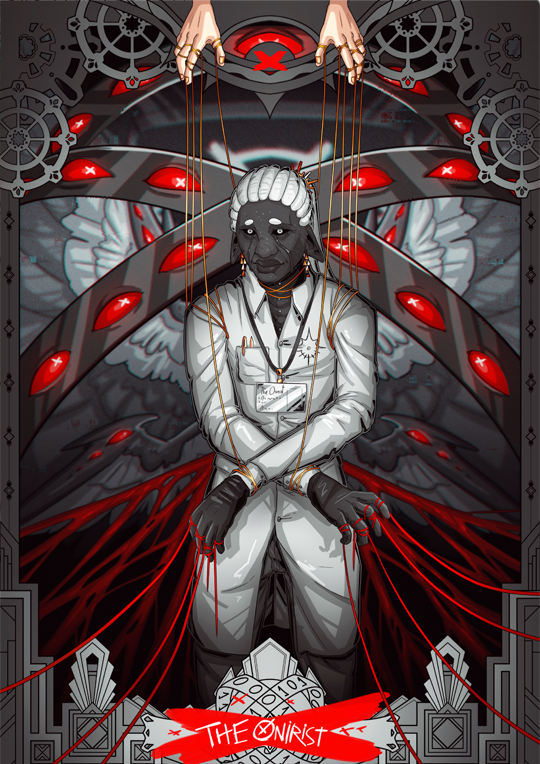
They had been assigned one purpose: To make people happy, no matter the cost. What happiness meant was, however, heavily twisted by their superior. Making use of Ataraxia, an ancient supercomputer powered by the remains of celestial beings, The Onirist managed to get fine control of those bearing a micro-chip. For the most part, they were convinced this was legitimately making people happy. But every now and then, they saw glimpses of the puppet strings leading all their actions, and they slowly realized something was wrong. Very, very wrong.
Hello! Here's the BBEG card I made for The Onirist/Urion, to match the ones made for the other baddies! I wanted to show a bit of Ataraxia in the background (fleshiness included). They've now cut the golden threads, and no longer respond to Solaralith, but Ataraxia itself has deemed them a fitting vessel. Alas, poor Urion!
(as always, reblogs are much appreciated!)
#dnd#dnd art#dungeons and dragons#cleric#mad scientist#object head#terror#puppet#tarot card#celestial#eldritch#ttrpg#sygdomthings#syg2022#the onirist#onirist#drow#dark elf#genasi#drowcember
509 notes
·
View notes
Text



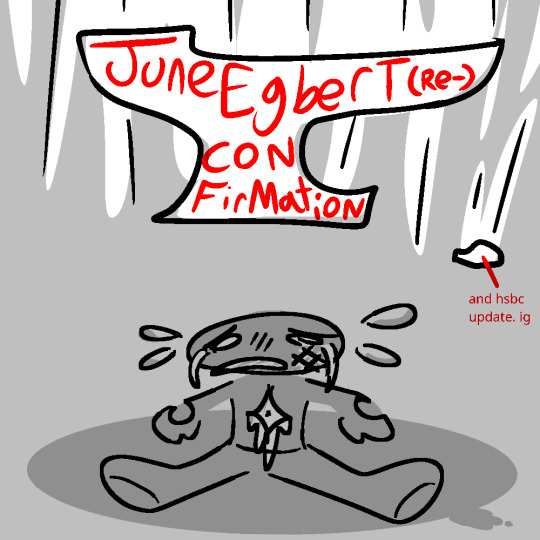
i think things need to stop keep happening to me one after the other after the other RIGHT NOW
#secret life#trafficblr#life series#hlvrai#hl2vrai#hlvrai2#brbvrai#bbvrai#homestuck#june egbert#hsbc#im not tagging every variation of that#hlvraii#<objectively funniest name for it but i dont think itll gain traction#did i mention ive had strep throat all week#edit:#anyways the one thing in common with all of these events is the fucking discourse#brbvrai is self explsnatory (being fakeout)#secret life is just. not really discourse but the fuckin. arbitrary arguments over curses and celestial bodies which is.. all metaphorical#please let it be metaphorical guys#and june discourse is chill now but hsbc in general is just. the pits for it.#double edit: i actually think ranboos omori stream right after i finished my secret life povs and right before i moved over to brbvrai#contributed to this#not sure in what way but it definitely contributed#myart
50 notes
·
View notes
Text
How NASA Chases and Investigates Bright Cosmic Blips - Technology Org
New Post has been published on https://thedigitalinsider.com/how-nasa-chases-and-investigates-bright-cosmic-blips-technology-org/
How NASA Chases and Investigates Bright Cosmic Blips - Technology Org
Stephen Lesage’s phone started vibrating just after halftime while he was watching a soccer game in Atlanta with a friend. When Lesage saw the incoming messages, the match no longer seemed important. A rare cosmic event had occurred, and he needed to get to his computer immediately.
Astronomers think a long GRB (gamma-ray burst) arises from a massive, rapidly rotating star when its core runs out of fuel and collapses, forming a black hole in the star’s center. In this artist’s concept, two jets emerge from the dying star and interact with surrounding gas and dust. Image credit: NASA’s Goddard Space Flight Center Conceptual Image Lab
“Everyone in that group was like, ‘this thing’s crazy! Who’s on duty to analyze this? This is what we’ve been waiting for,’” Lesage, a graduate student at the University of Alabama, Huntsville, recalled. “Time to go!”
The unusual event turned into a cosmic burst that may have been the brightest at X-ray and gamma-ray energies since civilization began. Astronomers dubbed it the BOAT, “the brightest of all time.” Lesage led an analysis of Fermi data that demonstrated just how bright the BOAT really was. More than 150 telescopes in space and on Earth followed up to get more details of the event including NASA’s IXPE (Imaging X-ray Polarimetry Explorer ), Hubble Space Telescope, and James Webb Space Telescope, as well as the European Space Agency’s XMM-Newton telescope.
[embedded content]
The BOAT is an example of what astronomers call Time-Domain and Multimessenger Astronomy. The “Time Domain” part refers to events that happen in the universe that telescopes can observe as they unfold, such as a supernova or the merger of two neutron stars. “Multimessenger Astronomy” refers to the variety of “messengers” that deliver information from the universe, including all forms of light, high-energy particles, and ripples in spacetime called gravitational waves.
While the universe may seem like it changes extremely slowly, over millions or even billions of years, its celestial occupants do sometimes produce dramatic changes on the order of days or even fractions of seconds. Galactic centers brighten as their central black holes eat material. Black holes siphon plasma from nearby stars. Stars explode. Neutron stars collide with black holes, neutron stars collide with neutron stars, and black holes merge with black holes. Even distant crashes of celestial objects can send powerful ripples that can be detected by space- and ground-based telescopes and instruments. Many of these phenomena are unpredictable in terms of both where and when they might happen next.
NASA has two “watchdog” satellites with wide fields of view that send out alerts when they detect a sudden brightening of gamma rays: Fermi and Swift. Fermi’s Gamma-Ray Burst Monitor and Large Area Telescope, and Swift’s Burst Alert Telescope, are key instruments that might be the first to observe these events.
“When something impulsive happens, when something goes boom and explodes or something goes crunch and collapses, they trigger,” said Valerie Connaughton, who leads the high-energy astrophysics portfolio and the Time-Domain and Multimessenger Astronomy Initiative within the Astrophysics Division at NASA Headquarters in Washington.
Once scientists receive an alert on their computers and phones, they may be able to collaborate with other telescopes to follow up on the event. By using a variety of different space-based observatories and instruments to study these largely unpredictable flashes, scientists can piece together what, where, when, and why they observed a “blip” in the usual calm of space.
After comparing observations of the BOAT from numerous telescopes, scientists determined that this unusually bright burst came from a supernova and specifically, the core collapse of a massive star rotating rapidly. Later, with data from NASA’s NuSTAR mission, scientists found that the jet of material shooting out from the exploding star had a more complicated shape than they originally thought.
“A giant star just exploded, and we get to study it and figure out what happened, and reverse engineer the pieces and put it back together,” Lesage said.
Just five months after the BOAT, scientists received an alert from Fermi about the second-brightest gamma-ray burst seen in the last 50 years. This newer signal, GRB 230307A, which happened in March 2023, joined the BOAT in the category of “long” gamma-ray bursts, lasting 200 seconds, compared to 600 for the BOAT. Thanks to infrared data from NASA’s James Webb Space Telescope, scientists determined that GRB 230307A may have had a very different origin: the merger of two neutron stars about a billion light-years away from Earth. What’s more, Webb detected the rare element tellurium, suggesting that neutron star mergers create heavy elements like this.
This result still puzzles astronomers such as Eric Burns, a co-author of the GRB 230307A paper and member of the Fermi team at Louisiana State University. Merging neutron stars shouldn’t produce such long gamma-ray bursts, and current models of atomic physics do not entirely explain the mid-infrared wavelengths that Webb detected. He hopes Webb will help us learn more about these kinds of events in the next few years.
“Time-domain astronomy lets us get fundamental answers on the properties of the universe, of fundamental physics itself, and the origin of the elements,” Burns said.
This image from NASA’s James Webb Space Telescope NIRCam (Near-Infrared Camera) instrument highlights Gamma-Ray Burst (GRB) 230307A and its associated kilonova, as well as its former home galaxy, among their local environment of other galaxies and foreground stars. The GRB likely was powered by the merger of two neutron stars. The neutron stars were kicked out of their home galaxy and travelled a distance of about 120,000 light-years, approximately the diameter of the Milky Way galaxy, before finally merging several hundred million years later. Image credit: NASA, ESA, CSA, STScI, A. Levan, Radboud University and University of Warwick
Cosmic “messengers” associated with fleeting cosmic blips also help scientists reconstruct their origins. The initial 2015 discovery of gravitational waves by LIGO, the Laser Interferometer Gravitational-Wave Observatory, showed that the universe could be observed in a brand new way, and began a new era of possibility for using multiple messengers to study sudden blips in the universe.
In 2017, scientists demonstrated that potential by combining gravitational wave observations with data from many different ground and space-based observatories to study a kilonova, or neutron star merger, called GW170817. Among the insights from the extensive study of this kilonova, Burns and colleagues used it to make the first precise measurement of the speed of gravity, “the last major confirmation of a prediction from Einstein,” he said.
Today, the network of the U.S. NSF (National Science Foundation)-supported LIGO, Europe’s VIRGO, and Japan’s KAGRA looks out for gravitational wave events.
Light is the only kind of “messenger” from the universe that has been detected for both the BOAT and the gamma-ray burst that seems to have produced tellurium. An experiment near the South Pole called IceCube, supported by the NSF, looked for high-energy neutrinos coming from the same area of the sky as each event, but did not find any. However, the lack of neutrinos observed helps scientists constrain the possibilities for how these events unfolded.
“This multimessenger approach is important, even when you don’t have a detection,” said Michela Negro, astrophysicist and assistant professor at Louisiana State University. “It really helps rule out some scenarios, on top of telling us something new when we have detections.”
For Lesage, who is writing his dissertation about the BOAT, time-domain and multimessenger astronomy is an exciting area of study. The BOAT itself is still keeping him and other astronomers busy as they look at all of the processes revealed by the exceptionally bright light from this extreme event. But more transient events are sure to come, and will keep scientists on their toes as they chase after them with a wide variety of telescopes and instruments.
The BOAT is an example of what astronomers call Time-Domain and Multimessenger Astronomy. The “Time Domain” part refers to events that happen in the universe that telescopes can observe as they unfold, such as a supernova or the merger of two neutron stars. “Multimessenger Astronomy” refers to the variety of “messengers” that deliver information from the universe, including all forms of light, high-energy particles, and ripples in spacetime called gravitational waves.
While the universe may seem like it changes extremely slowly, over millions or even billions of years, its celestial occupants do sometimes produce dramatic changes on the order of days or even fractions of seconds. Galactic centers brighten as their central black holes eat material. Black holes siphon plasma from nearby stars. Stars explode. Neutron stars collide with black holes, neutron stars collide with neutron stars, and black holes merge with black holes. Even distant crashes of celestial objects can send powerful ripples that can be detected by space- and ground-based telescopes and instruments. Many of these phenomena are unpredictable in terms of both where and when they might happen next.
NASA has two “watchdog” satellites with wide fields of view that send out alerts when they detect a sudden brightening of gamma rays: Fermi and Swift. Fermi’s Gamma-Ray Burst Monitor and Large Area Telescope, and Swift’s Burst Alert Telescope, are key instruments that might be the first to observe these events.
“When something impulsive happens, when something goes boom and explodes or something goes crunch and collapses, they trigger,” said Valerie Connaughton, who leads the high-energy astrophysics portfolio and the Time-Domain and Multimessenger Astronomy Initiative within the Astrophysics Division at NASA Headquarters in Washington.
Once scientists receive an alert on their computers and phones, they may be able to collaborate with other telescopes to follow up on the event. By using a variety of different space-based observatories and instruments to study these largely unpredictable flashes, scientists can piece together what, where, when, and why they observed a “blip” in the usual calm of space.
After comparing observations of the BOAT from numerous telescopes, scientists determined that this unusually bright burst came from a supernova and specifically, the core collapse of a massive star rotating rapidly. Later, with data from NASA’s NuSTAR mission, scientists found that the jet of material shooting out from the exploding star had a more complicated shape than they originally thought.
“A giant star just exploded, and we get to study it and figure out what happened, and reverse engineer the pieces and put it back together,” Lesage said.
Just five months after the BOAT, scientists received an alert from Fermi about the second-brightest gamma-ray burst seen in the last 50 years. This newer signal, GRB 230307A, which happened in March 2023, joined the BOAT in the category of “long” gamma-ray bursts, lasting 200 seconds, compared to 600 for the BOAT. Thanks to infrared data from NASA’s James Webb Space Telescope, scientists determined that GRB 230307A may have had a very different origin: the merger of two neutron stars about a billion light-years away from Earth. What’s more, Webb detected the rare element tellurium, suggesting that neutron star mergers create heavy elements like this.
This result still puzzles astronomers such as Eric Burns, a co-author of the GRB 230307A paper and member of the Fermi team at Louisiana State University. Merging neutron stars shouldn’t produce such long gamma-ray bursts, and current models of atomic physics do not entirely explain the mid-infrared wavelengths that Webb detected. He hopes Webb will help us learn more about these kinds of events in the next few years.
“Time-domain astronomy lets us get fundamental answers on the properties of the universe, of fundamental physics itself, and the origin of the elements,” Burns said.
This image from NASA’s James Webb Space Telescope NIRCam (Near-Infrared Camera) instrument highlights Gamma-Ray Burst (GRB) 230307A and its associated kilonova, as well as its former home galaxy, among their local environment of other galaxies and foreground stars. The GRB likely was powered by the merger of two neutron stars. The neutron stars were kicked out of their home galaxy and travelled a distance of about 120,000 light-years, approximately the diameter of the Milky Way galaxy, before finally merging several hundred million years later. Image credit: NASA, ESA, CSA, STScI, A. Levan, Radboud University and University of Warwick
Cosmic “messengers” associated with fleeting cosmic blips also help scientists reconstruct their origins. The initial 2015 discovery of gravitational waves by LIGO, the Laser Interferometer Gravitational-Wave Observatory, showed that the universe could be observed in a brand new way, and began a new era of possibility for using multiple messengers to study sudden blips in the universe.
In 2017, scientists demonstrated that potential by combining gravitational wave observations with data from many different ground and space-based observatories to study a kilonova, or neutron star merger, called GW170817. Among the insights from the extensive study of this kilonova, Burns and colleagues used it to make the first precise measurement of the speed of gravity, “the last major confirmation of a prediction from Einstein,” he said.
Today, the network of the U.S. NSF (National Science Foundation)-supported LIGO, Europe’s VIRGO, and Japan’s KAGRA looks out for gravitational wave events.
Light is the only kind of “messenger” from the universe that has been detected for both the BOAT and the gamma-ray burst that seems to have produced tellurium. An experiment near the South Pole called IceCube, supported by the NSF, looked for high-energy neutrinos coming from the same area of the sky as each event, but did not find any. However, the lack of neutrinos observed helps scientists constrain the possibilities for how these events unfolded.
“This multimessenger approach is important, even when you don’t have a detection,” said Michela Negro, astrophysicist and assistant professor at Louisiana State University. “It really helps rule out some scenarios, on top of telling us something new when we have detections.”
For Lesage, who is writing his dissertation about the BOAT, time-domain and multimessenger astronomy is an exciting area of study. The BOAT itself is still keeping him and other astronomers busy as they look at all of the processes revealed by the exceptionally bright light from this extreme event. But more transient events are sure to come, and will keep scientists on their toes as they chase after them with a wide variety of telescopes and instruments.
#000#2023#alerts#Analysis#approach#Astronomy#Astronomy news#Astrophysics#atomic#billion#black hole#Black holes#burns#celestial objects#collaborate#computer#computers#data#details#detection#dust#earth#energy#Engineer#Environment#ESA#Europe#European Space Agency#Events#fast radio bursts
0 notes